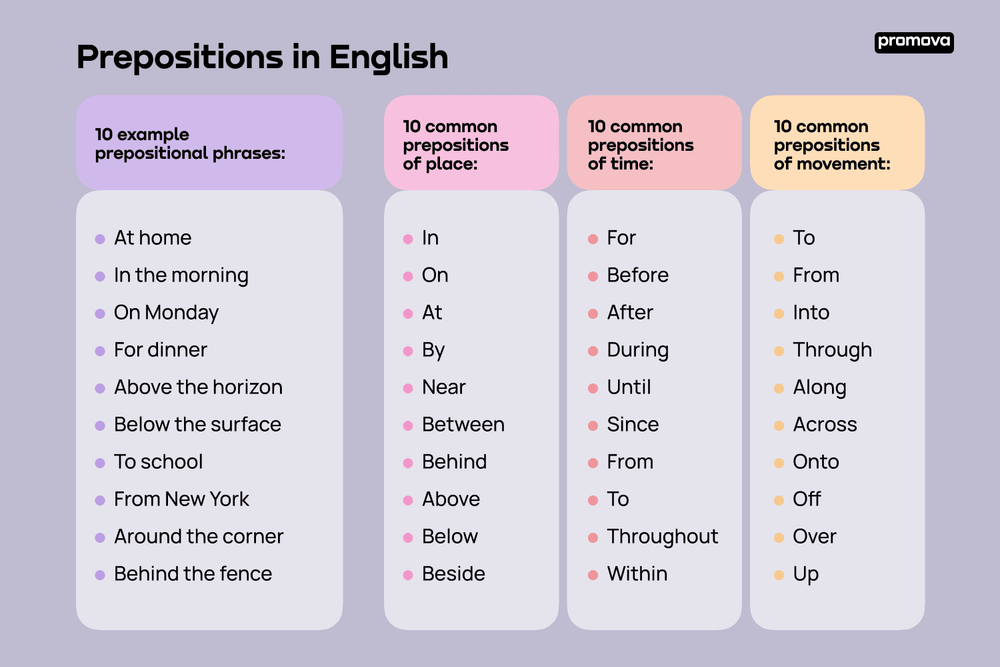Prepositions are an essential part of grammar that help to establish relationships between different elements in a sentence. They usually indicate location, direction, time, or relationships between nouns and pronouns. Understanding how prepositions work can improve your writing and communication skills.
Prepositions are words that show the relationship between a noun or pronoun and other words in a sentence. They are usually short words, such as “in,” “on,” “at,” “with,” “to,” and “from.” Prepositions can also be a group of words, known as prepositional phrases, that function as a single preposition.
Examples of Prepositions in Grammar
1. The book is on the table.
2. She walked to the store.
3. The cat is hiding under the bed.
4. We are going to the beach with our friends.
5. The keys are in my bag.
Prepositions can also be used to indicate time, such as “before,” “after,” “during,” and “since.” For example: “We will meet after the movie.” Additionally, prepositions can show relationships between objects, like “next to,” “beside,” “between,” and “among.” For instance, “The park is next to the school.”
It’s important to use prepositions correctly in sentences to convey the intended meaning. Misplacing a preposition can change the entire context of a sentence. Practice using prepositions in different contexts to improve your grammar skills and enhance your writing.
In conclusion, prepositions play a crucial role in grammar by establishing connections between various elements in a sentence. By mastering the use of prepositions, you can effectively communicate ideas and information with clarity and precision. Remember to pay attention to the correct placement of prepositions in your writing to ensure accurate and coherent communication.
